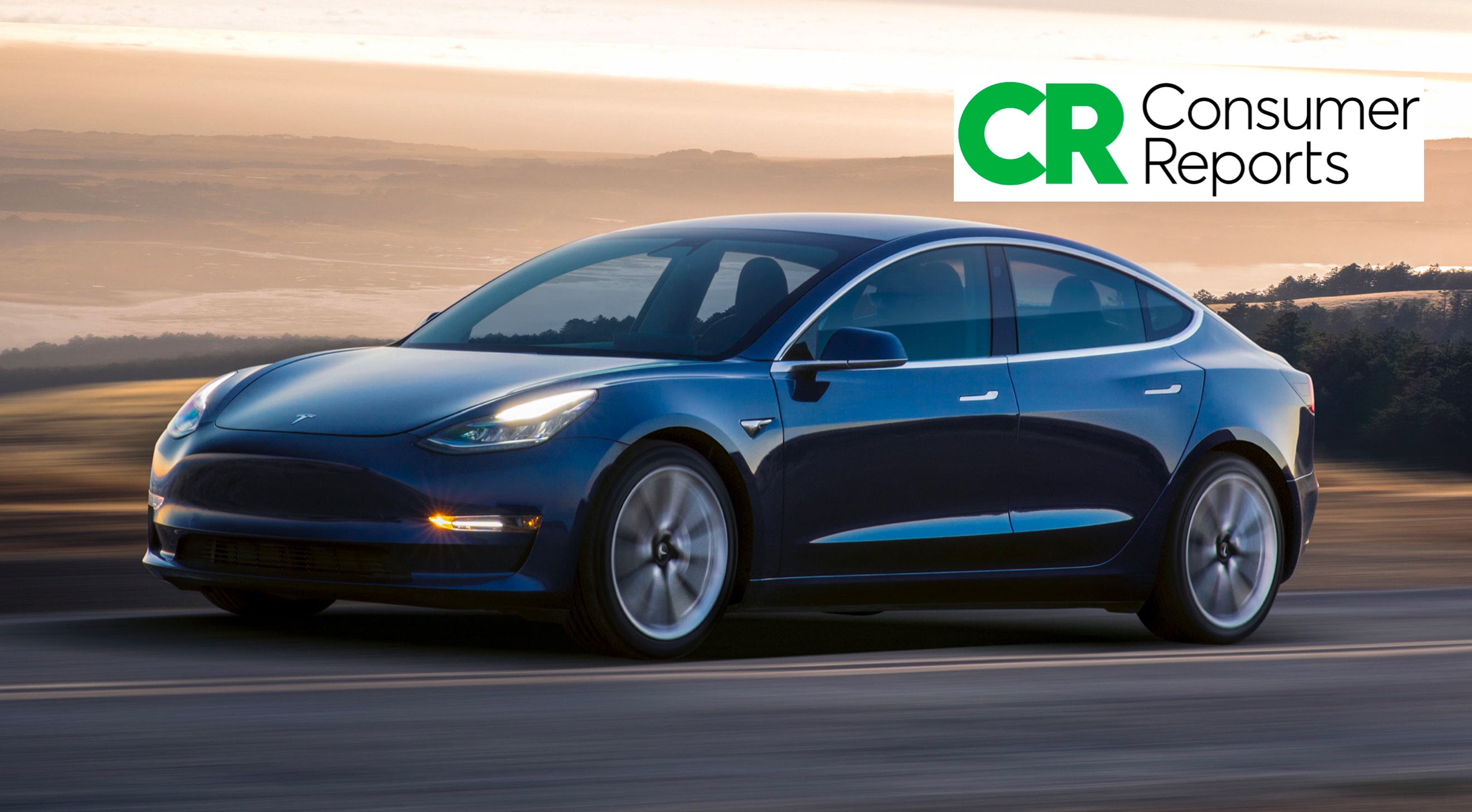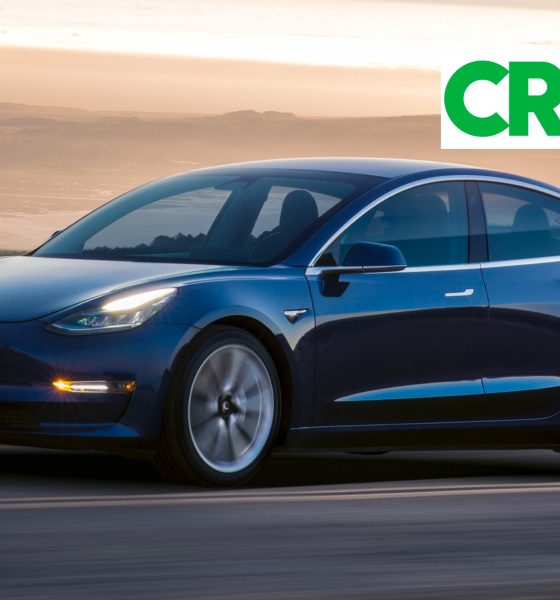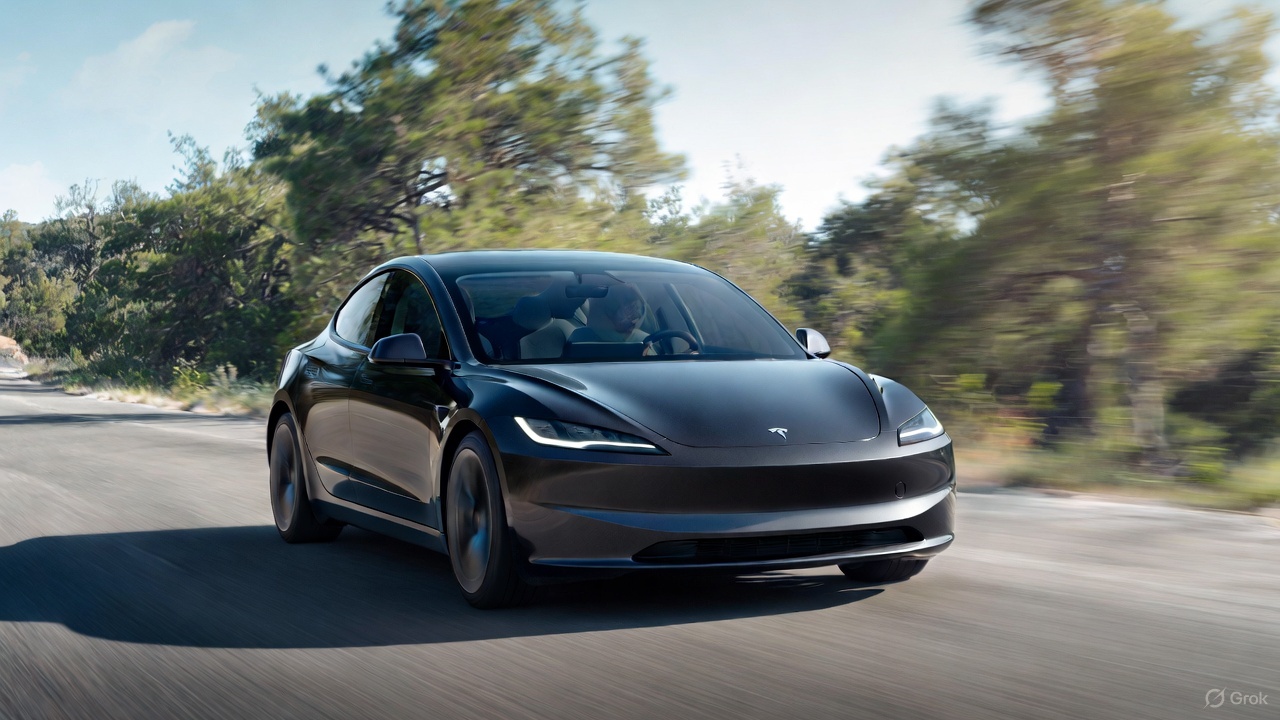

News
CR responds to Tesla over claims that its reviews are inaccurate and misleading
Consumer Reports has fired back at Tesla, issuing a statement that defends its recent report that predicts Model 3 to have “average reliability”. “Tesla appears unhappy that CR expects the new-to-market Tesla Model 3 to be of average reliability, which is generally a positive projection for any first model year of a car.” says CR in a press release sent to Teslarati.
The nonprofit organization that aims to educate consumers on the value of product, that can be anywhere from a household vacuum cleaner to an automobile, through its product testing reinforces its methodology for making predictions. “Here’s how we make the prediction” notes CR, addressing Tesla’s claim that the organization’s “automotive reporting is consistently inaccurate and misleading to consumers”.
“CR uses survey data it receives from car owners to predict the expected reliability of new cars being introduced to the market by looking across a manufacturer’s historic results (akin to how a weather forecaster predicts it will be sunny) — separate from the hands-on road tests we use for our overall score.” reads the press release.
The organization provides further reasoning for the predicted reliability rating assigned to Tesla’s latest mass market vehicle. “For the Model 3, we looked at more than 2,000 consumer survey responses about Tesla models. In fact, the Tesla Model S is now reported as having above average reliability for the first time ever. The Tesla Model S is also currently CR’s top rated car, period. (Kudos on both, Tesla!)”
We’ve provided the full press release from Consumer Reports below. Let us know what your thoughts are in the comments section.
CONSUMER REPORTS RESPONDS TO TESLA’S COMPLAINTS ON REPORTING, RESEARCH AND REVIEWS
Late yesterday, Tesla shared with select journalists what appears to have been a prepared statement of supercharged and unsupported claims about the performance and safety of their own vehicles and our 2017 Annual Reliability Survey results, taking the occasion to air a number of grievances against Consumer Reports (CR) and our overall reporting on Tesla and its products.
As is often the result of any new product or company that electrifies the market, Tesla does garner an outsized level of attention, scrutiny and discussion by the media. While we appreciate Tesla’s efforts to typically embrace and navigate, if not directly steer, this attention, we would like to offer some clarity on the examples they cite. (For other, perhaps not surprisingly Tesla-positive, examples from CR, you can visit the articles currently available at the Tesla press site, at least until they pull those links down, or visit us at CR.org).
Tesla seems to misunderstand or is conflating some of what we fundamentally do — our Annual Reliability Survey report and the related predictions versus our car reviews and tests.
First, Tesla appears unhappy that CR expects the new-to-market Tesla Model 3 to be of average reliability, which is generally a positive projection for any first model year of a car. This expectation is based on CR’s 2017 Annual Reliability Survey, measuring the dependability as opposed to the satisfaction, of more than 300 car models, model year 2000 to 2017, using the responses of individual owners of more than 640,000 vehicles. We provide this information to help people make informed purchasing decisions as new products reach the market.
Here’s how we make the prediction: CR uses survey data it receives from car owners to predict the expected reliability of new cars being introduced to the market by looking across a manufacturer’s historic results (akin to how a weather forecaster predicts it will be sunny) — separate from the hands-on road tests we use for our overall score.
For the Model 3, we looked at more than 2,000 consumer survey responses about Tesla models. In fact, the Tesla Model S is now reported as having above average reliability for the first time ever. The Tesla Model S is also currently CR’s top rated car, period. (Kudos on both, Tesla!)
Second, Tesla has taken larger issue with how CR produces car ratings, citing specific examples where they think our testing methods fell short or were unfair. CR conducts a battery of 50 standardized tests across all the vehicles we review — we have a lot of mileage in this arena. We also continuously update our ratings as new surveys are conducted and we test the cars we purchase to reflect the current realities of what a consumer should expect in the marketplace. (That’s right, purchase. CR does not accept any advertising and purchases the products we rate like any other regular person.) The Model S rating has changed over time, going up and down, as new data becomes available.
Thanks to technological advances such as product changes delivered by an over-the-air software update and thereby adding or subtracting features, we reevaluate products to inform consumers about what to expect after any update. These changes are then reflected in our ratings. Tesla frequently updates its software in just this way, which is relatively unique in the automotive market, often resulting in material changes to its products and therefore our ratings — both positively and negatively. It also happens to drive more frequent press coverage given the need to communicate product changes to consumers.
While our reliability survey data feeds into the overall score we give any product,that is just one input. As with all the cars we review, you can rest assured that we will thoroughly test and evaluate the Model 3 with the same care and scrutiny we apply to all the cars we test just as soon as we can get one — we’re waiting patiently along with other consumers.
As an independent, nonprofit organization that works side-by-side with consumers to create a fairer, safer, and healthier world, CR provides trusted knowledge people depend on to make better, more informed choices. We conduct evidence-based product testing and ratings, rigorous research, hard-hitting investigative journalism, public education, and steadfast advocacy on behalf of consumers’ interests. Buying a car that has an average or above average score for predicted reliability will likely reduce the chances of having problems with the car.
We at CR are confident in our data, methods, and reporting — and the historic results we’ve achieved in improving consumer products, services, and the marketplace. We will continue to report on and test Tesla’s products in the same fair-minded, consumer-focused way we do with all manufacturers, to help shape products to best serve the needs of consumers.

News
Tesla FSD fleet is nearing 7 billion total miles, including 2.5 billion city miles
As can be seen on Tesla’s official FSD webpage, vehicles equipped with the system have now navigated over 6.99 billion miles.

Tesla’s Full Self-Driving (Supervised) fleet is closing in on almost 7 billion total miles driven, as per data posted by the company on its official FSD webpage.
These figures hint at the massive scale of data fueling Tesla’s rapid FSD improvements, which have been quite notable as of late.
FSD mileage milestones
As can be seen on Tesla’s official FSD webpage, vehicles equipped with the system have now navigated over 6.99 billion miles. Tesla owner and avid FSD tester Whole Mars Catalog also shared a screenshot indicating that from the nearly 7 billion miles traveled by the FSD fleet, more than 2.5 billion miles were driven inside cities.
City miles are particularly valuable for complex urban scenarios like unprotected turns, pedestrian interactions, and traffic lights. This is also the difference-maker for FSD, as only complex solutions, such as Waymo’s self-driving taxis, operate similarly on inner-city streets. And even then, incidents such as the San Francisco blackouts have proven challenging for sensor-rich vehicles like Waymos.
Tesla’s data edge
Tesla has a number of advantages in the autonomous vehicle sector, one of which is the size of its fleet and the number of vehicles training FSD on real-world roads. Tesla’s nearly 7 billion FSD miles then allow the company to roll out updates that make its vehicles behave like they are being driven by experienced drivers, even if they are operating on their own.
So notable are Tesla’s improvements to FSD that NVIDIA Director of Robotics Jim Fan, after experiencing FSD v14, noted that the system is the first AI that passes what he described as a “Physical Turing Test.”
“Despite knowing exactly how robot learning works, I still find it magical watching the steering wheel turn by itself. First it feels surreal, next it becomes routine. Then, like the smartphone, taking it away actively hurts. This is how humanity gets rewired and glued to god-like technologies,” Fan wrote in a post on X.
News
Tesla starts showing how FSD will change lives in Europe
Local officials tested the system on narrow country roads and were impressed by FSD’s smooth, human-like driving, with some calling the service a game-changer for everyday life in areas that are far from urban centers.

Tesla has launched Europe’s first public shuttle service using Full Self-Driving (Supervised) in the rural Eifelkreis Bitburg-Prüm region of Germany, demonstrating how the technology can restore independence and mobility for people who struggle with limited transport options.
Local officials tested the system on narrow country roads and were impressed by FSD’s smooth, human-like driving, with some calling the service a game-changer for everyday life in areas that are far from urban centers.
Officials see real impact on rural residents
Arzfeld Mayor Johannes Kuhl and District Administrator Andreas Kruppert personally tested the Tesla shuttle service. This allowed them to see just how well FSD navigated winding lanes and rural roads confidently. Kruppert said, “Autonomous driving sounds like science fiction to many, but we simply see here that it works totally well in rural regions too.” Kuhl, for his part, also noted that FSD “feels like a very experienced driver.”
The pilot complements the area’s “Citizen Bus” program, which provides on-demand rides for elderly residents who can no longer drive themselves. Tesla Europe shared a video of a demonstration of the service, highlighting how FSD gives people their freedom back, even in places where public transport is not as prevalent.
What the Ministry for Economic Affairs and Transport says
Rhineland-Palatinate’s Minister Daniela Schmitt supported the project, praising the collaboration that made this “first of its kind in Europe” possible. As per the ministry, the rural rollout for the service shows FSD’s potential beyond major cities, and it delivers tangible benefits like grocery runs, doctor visits, and social connections for isolated residents.
“Reliable and flexible mobility is especially vital in rural areas. With the launch of a shuttle service using self-driving vehicles (FSD supervised) by Tesla in the Eifelkreis Bitburg-Prüm, an innovative pilot project is now getting underway that complements local community bus services. It is the first project of its kind in Europe.
“The result is a real gain for rural mobility: greater accessibility, more flexibility and tangible benefits for everyday life. A strong signal for innovation, cooperation and future-oriented mobility beyond urban centers,” the ministry wrote in a LinkedIn post.
News
Tesla China quietly posts Robotaxi-related job listing
Tesla China is currently seeking a Low Voltage Electrical Engineer to work on circuit board design for the company’s autonomous vehicles.

Tesla has posted a new job listing in Shanghai explicitly tied to its Robotaxi program, fueling speculation that the company is preparing to launch its dedicated autonomous ride-hailing service in China.
As noted in the listing, Tesla China is currently seeking a Low Voltage Electrical Engineer to work on circuit board design for the company’s autonomous vehicles.
Robotaxi-specific role
The listing, which was shared on social media platform X by industry watcher @tslaming, suggested that Tesla China is looking to fill the role urgently. The job listing itself specifically mentions that the person hired for the role will be working on the Low Voltage Hardware team, which would design the circuit boards that would serve as the nervous system of the Robotaxi.
Key tasks for the role, as indicated in the job listing, include collaboration with PCB layout, firmware, mechanical, program management, and validation teams, among other responsibilities. The role is based in Shanghai.
China Robotaxi launch
China represents a massive potential market for robotaxis, with its dense urban centers and supportive policies in select cities. Tesla has limited permission to roll out FSD in the country, though despite this, its vehicles have been hailed as among the best in the market when it comes to autonomous features. So far, at least, it appears that China supports Tesla’s FSD and Robotaxi rollout.
This was hinted at in November, when Tesla brought the Cybercab to the 8th China International Import Expo (CIIE) in Shanghai, marking the first time that the autonomous two-seater was brought to the Asia-Pacific region. The vehicle, despite not having a release date in China, received a significant amount of interest among the event’s attendees.








